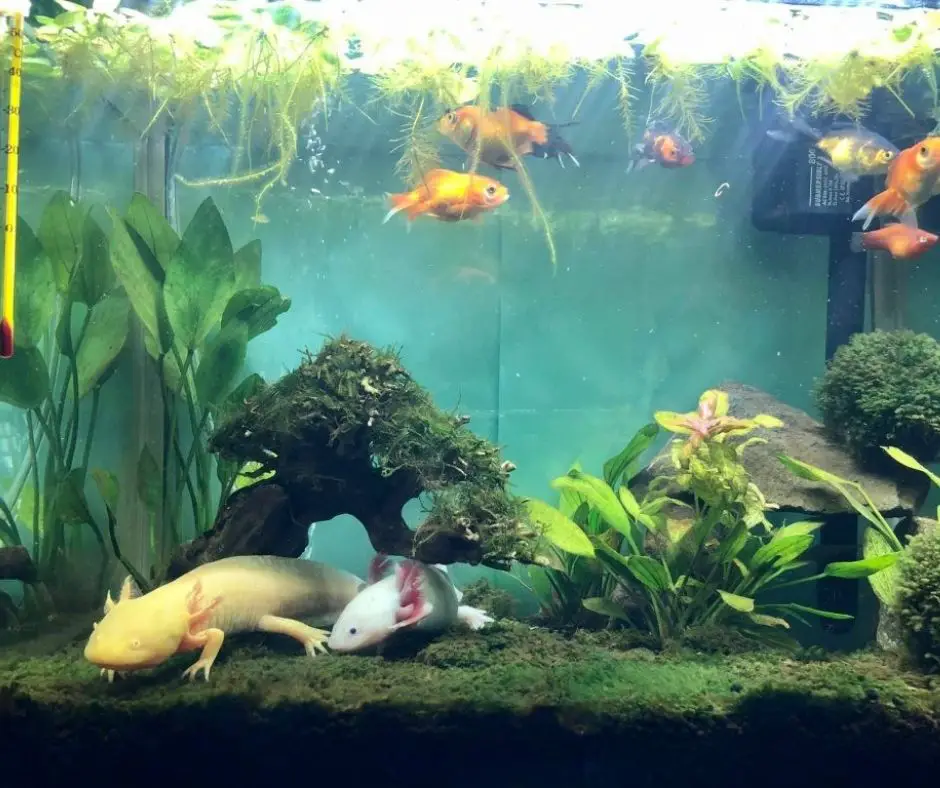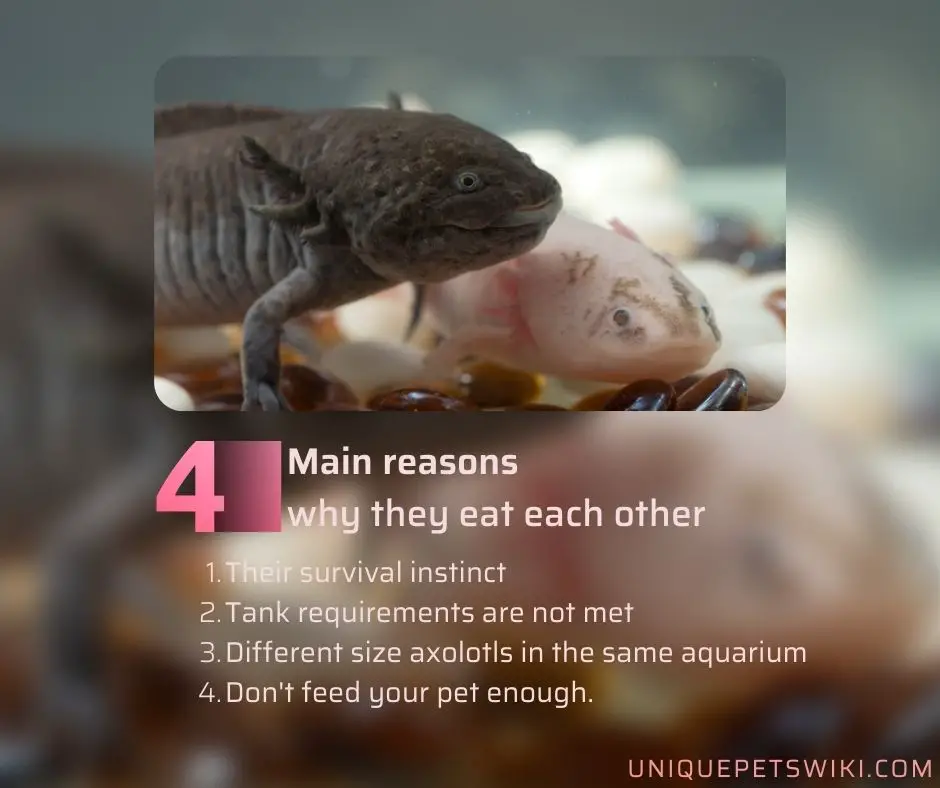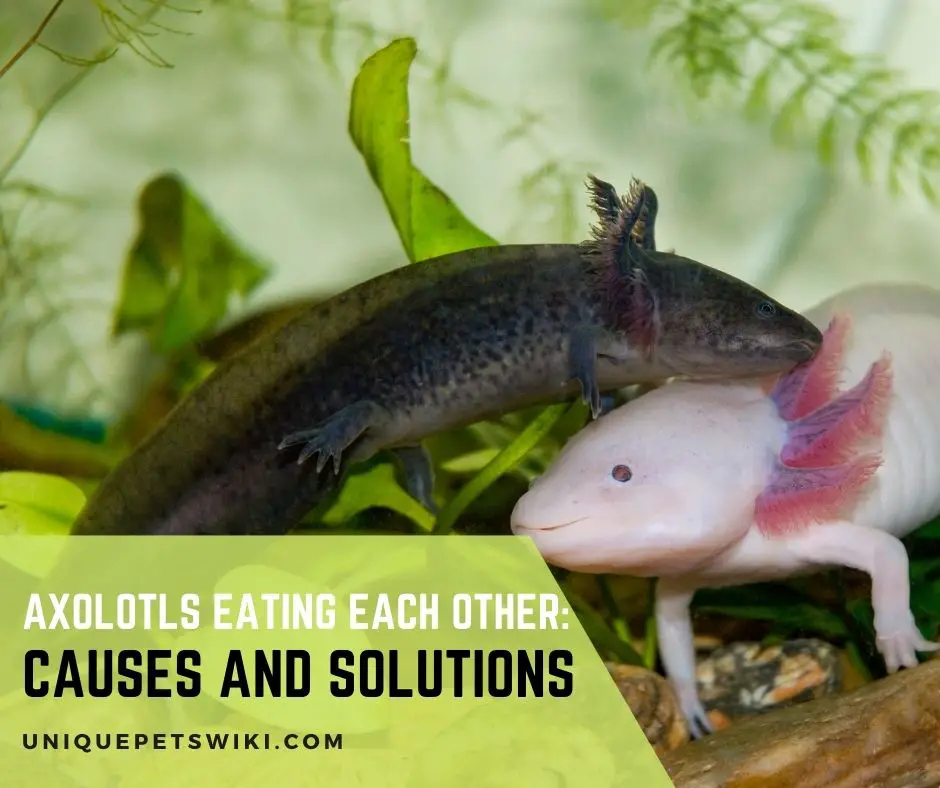Multiple Axolotls can be kept in the same tank without any issues. You must understand that each of them has its area and must be treated as such. Furthermore, axolotls eating each other may be surprising, particularly among new Axolotl owners.
One of your Axolotls may be missing a leg or its gills. Naturally, it is your duty as an axolotl owner to determine whether or not these weird happenings are typical and what is causing them.
After reading this article, you’ll have a better idea of why Axolotl eats each other, the reasons behind this, and what you can do to prevent it from happening again. Let’s dive in!
Contents
Do Axolotls Eat Other Axolotls?

If you’re an axolotl, you’re faced with two choices: eat your siblings’ arms, or be eaten by your sibling. As a result, the uncomfortable answer is that axolotls are capable of eating one another.
The first indicators of axolotls eating each other are red or white lines across the Axolotl’s legs. The following symptoms may manifest as loss of gills, fingers, toes, hands, feet, and sometimes complete limbs.
If you notice these, make sure to grab them both right immediately. This will lead the biter to become alarmed, causing it to release its bite.
It is possible, however, to regenerate the missing body parts of the Axolotl in around ten weeks in most cases.
Why Do Axolotls Eat Each Other?
Of course, Axolotl eating each other does not happen without reason.
There are four main reasons why they eat each other; their survival instinct, tank requirements are not met, different size axolotls in the same aquarium, and lastly, you don’t feed your pet enough.
Scroll down below to have a better understanding of these reasons!

Survival Instinct
The notion of a cannibalistic phase is motivated by their instinct for survival. As soon as the axolotl’s hatch, they must consume food to ensure that they continue to grow and develop; otherwise, they will die.
Food sources in some locations may become slightly depleted due to the large number of hatchings that can occur at one time resulting in Axolotls eating each other.
Size Difference
The second item on the list is the difference in body size. Axolotls under six inches in length will be cannibalistic against one another. Therefore, maintain them in separate tanks or install a tank divider to keep them from eating one other.
Adult axolotls that are six inches can share a room. A larger axolotl will swallow a smaller one.
Aside from that, they have poor vision, and they will devour anything that will fit in their mouth. If an axolotl is small enough to fit in their mouth, they will not hesitate to eat it. Yum!
Tank is Too Small
According to the third item on the list, the tank is too small. Each Axolotl requires a precise amount of space to survive and thrive. You’ll need a tank with a minimum capacity of 20 gallons, for a single one.
If you wish to keep two of them, you must purchase a 40-50 gallon tank, which is twice the original size. Adding an Axolotl increases the tank’s volume by 20 gallons for every additional Axolotl.
Consequently, if your tank is too tiny, your pet will be under stress. Keep in mind that they are in a small space together and may perceive themselves as rivals.
Bright lighting, poor water quality, and other conditions can also stress them out, causing them to turn on and fight one another.
SeaClear Acrylic Aquarium Combo Set
- Combo includes aquarium, reflector and electrical 24" light fixture
- Acrylic aquariums are clearer than glass, 17 times stronger, and only half the weight!
- More impact resistant and less prone to chipping or cracking than glass, making it safer around children and pets
- Safe for Salt or Freshwater
- You won't believe how your fish and decorations will pop when viewing this beautiful SeaClear aquarium
Last update on 2022-12-29 / Affiliate links / Images from Amazon Product Advertising API
Underfed
Your axolotls may be nipping at each other because they’re underfed. When they’re starving, they’ll snap at anything and everything.
They’ll nibble on their tails, including plants, their owners’ hands, air bubbles, and even each other.
Isn’t that horrifying?! Being born into such a huge family and living in such a cramped environment makes it necessary for them to feed themselves by eating the limbs of their siblings.
What Should You Do If Axolotls Eat Each Other
To prevent this major issue, there are several solutions available. You should try feeding them more. Feed your pet twice daily rather than once daily to determine if this makes a difference.
If you feed them more frequently, they will become so full that they will forget about nipping each other. Well-fed axies snap less frequently. Therefore, you may need to increase their feeding.
Plus, they will grow rapidly, helping them exit the nipping stage sooner. Secondly, You can keep them apart until the damaged one is entirely recovered, but its leg should regenerate within ten weeks.
Finally, they can be raised in separate tanks or separated using a tank divider. Adult axolotls above the length of six inches may be housed together. Once they reach six inches, axolotls will grow out of this cannibalistic stage.
Invert Aquatics Soft Pellets for Axolotls
- Quick Sinking
- Advanced Daily Nutrition
- Moist Sinking Pellets
- New Look! Same Great Food!
Last update on 2022-12-30 / Affiliate links / Images from Amazon Product Advertising API
What Size Axolotl Should Live Together?
Because axolotls are not sociable creatures, they do not require a buddy to keep them entertained. That being said, it is acceptable to house axolotls together as long as they are around the same size.
If one axolotl fits comfortably into the mouth of the other, it is likely to become a snack. This is common when there are youngsters of varied sizes present.
Read more in: can axolotls live together?
Wrapping Up
Axolotls have been shown to be cannibalistic. As long as you feed them properly, meet the tank needs, and don’t keep juveniles of different sizes in the tank, everything will go as planned.
Also, always keep them in separate tanks until they’re old enough to be put together. We understand if you want to keep more than one Axolotl, it’s totally fine!
Taking care of multiple salamanders increases both the fun and the difficulty of the task. In general, doing it yourself at home will be an amazing experience.


